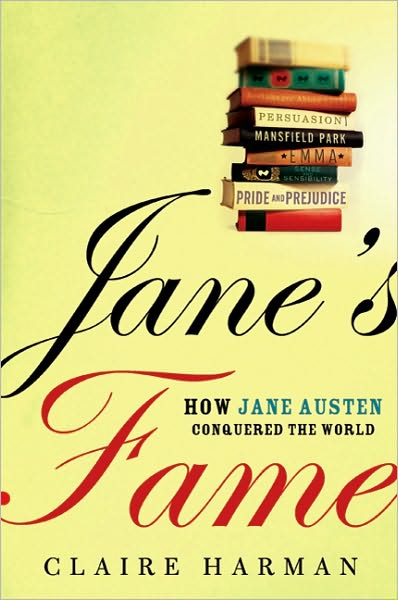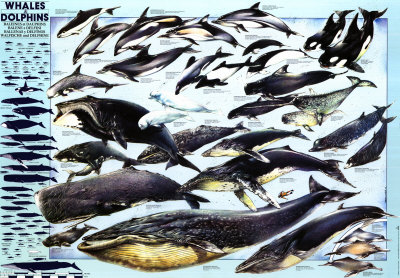Jane Austen (1775-1817) is more popular today than she ever was in her all-too brief life. Arguably the best-known female writer in literary history, Jane wrote only six books—Sense and Sensibility, Pride and Prejudice, Emma, Mansfield Park, Northanger Abbey, and Persuasion—before she died at the age of forty-two. Some think of her as the ultimate romantic, the founding mother of the chick lit genre. Some admire her keen wit and observant eye, seeing in Jane an uncanny ability to critique society. Not merely content to read Jane’s books, we’ve created an entire industry around her legacy—sequels, prequels, spin-offs, modern adaptations, and a unique body of work that analyzes why exactly we’re so fond of dear old Jane.
Jane Austen: A Life by Claire Tomalin, 1997, Alfred A. Knopf Books (Biography/ 19th Century English Novelists)
The first biography of Jane Austen was published a few years after her death by a nephew; it was meant to be the final word on “Aunt Jane” and her quiet, humble existence. To her later biographers, Jane proved exceptionally elusive—despite leading such a supposedly ordinary existence, there are very few records, notes, letters, or other papers that reveal what Jane was really like. Guesswork is a must for an Austen biographer, especially since sister Cassandra destroyed many of Jane’s letters, which hints at a private life that was more dramatic than historical fact leads us to believe. Jane Austen: A Life, the 1997 biography by Claire Tomalin, is one of the best. Tomalin reveals details about the lives of family and friends to throw light on how Jane lived and worked and thought and felt; Jane’s life is placed firmly in its context of 18th and 19th century religion, politics, and war. Most importantly, the evolution of Jane’s writing is thoughtfully traced. The reader is left with a vivid sense of Jane, her work, and her life. And that, given the difficulty of truly explaining Jane, is the best Austen fans can wish for.
Becoming Jane Austen: A Life by Jon Spence, 2007, Hambledon Continuum Books (Biography/ 19th Century English Novelists)
The only other writing Jane left behind (besides her novels, a few half-finished works-in-progress, and a handful of childhood scribblings) is her letters. Jane’s elegant literary style is not on show in these missives; these are everyday thoughts put down on the spur of the moment, gossip, news, and family jokes. But there is one tantalizing incident—a flirtation with one “Tom Lefroy.” Tom and Jane met, danced, chatted, and parted forever. Schoolgirl crush or doomed love affair? We’ll never know, but that doesn’t stop biographer Jon Spence from speculating that this relationship was a turning point in Jane’s life that directly inspired the love stories she later wrote. Spence also highlights the possible influence of Jane’s fashionable, glamorous cousin Eliza de Feuillide, whose first husband was guillotined during the French Revolution. By making connections between historical fact and literary fiction, Spence infuses Jane’s life with the romance and drama that Austen fans long to know she experienced. Becoming Jane Austen was the inspiration for the 2007 Hollywood movie Becoming Jane, which firmly casts Jane Austen as the heroine in her very own romantic comedy.
“The Janeites” in Collected Stories by Rudyard Kipling, 1999, Everyman’s Library/ Alfred A. Knopf Books, originally published 1922 (Fiction/ Short Story Collections)
Rudyard Kipling’s 1922 “The Janeites” is one of the first stories to mention Jane Austen as a member of the literary canon, as an author one is expected to know and love. In the story, a simple-minded ex-soldier recounts how, thanks to Jane, he survived World War I. Humberstall is wounded and reassigned to the position of assistant mess waiter. While he’s working, he notices the senior mess waiter conversing on equal terms with military officers. The subject, of course, is Jane Austen. Humberstall has never heard of this “Jane woman,” but he can tell that a passion for her is something akin to being a member of a secret society. Soon Humberstall is escaping the horrors of war by learning the meaning of “Tilney,” learning how to spell “Catherine De Bugg,” naming artillery after other characters, and gossiping about whether Jane ever got married. Humberstall tells his own story so Kipling writes in a lower-class British dialect; it’s charming (once you get used to it) and Austen fans will get a kick out of Humberstall’s crash-course in all things Austen.
“Jane Austen Faints” in Virginia Woolf’s Nose: Essays on Biography by Hermione Lee, 2005, Princeton University Press (Nonfiction/ Literary History and Analysis/ Biography)
How does a biographer handle the ambiguities, contradictions, missing years, mythmaking, facts, and fictions? When British writer Hermione Lee gets to the case of Jane Austen, she has plenty to talk about. Given the piddling amount of factual information that exists from Jane’s forty-two years on earth, Austen is a notoriously tough subject. Any incident that is known—no matter how trivial—is ripe for debate. Once, according to family legend, Jane Austen fainted. The cause was the unexpected news that Mr. Austen had decided to move the family to Bath; the result has been intense biographical speculation. This is Jane exhibiting extreme emotion; it must be important. Lee examines various Austen bios see what different writers have made of the incident. Is Jane shocked by how sudden the news is? Terrified of city life, away from the familiar green countryside? Afraid a secret love affair has been uncovered and she is being forcibly separated from her suitor? The real cause is unknown, and so every biographer’s point of view colors our vision of Austen—and forces us to question whether we can ever really know Jane as well as we think we do.
Jane’s Fame: How Jane Austen Conquered the World by Claire Harman, 2009, Henry Holt and Co. (Nonfiction/ Literary History and Analysis/ 19th Century English Novelists)
Even if you’ve never read any of Austen’s books, you’re familiar with their titles and plots. Note the success of the BBC’s TV Pride and Prejudice miniseries starring Colin Firth as Mr. Darcy, or the chick lit bestseller Bridget Jones’s Diary (a modern retelling of Pride and Prejudice, complete with its own Mr. Darcy), or the Hollywood movie Clueless (a modern retelling of Emma), or the recent book mash-up Pride and Prejudice and Zombies. Today, Jane is everywhere, and author Claire Harmon shows us how she got there. This is a biography not of Jane’s life but of her fame—her quiet life followed by a few brief decades where no one knew her name, and then a century-long revival that has yet to end. Harman shows us Jane as a feminist and as an anti-feminist, Jane as a prickly old maid and Jane as a token for “girl power,” Jane as a Hollywood heroine and as a Bollywood starlet. We meet Jane’s detractors (Charlotte Brontë, Mark Twain) and Jane’s fans (Rudyard Kipling, Virginia Woolf). We figure out our own personal reasons for loving Jane. However she is viewed and analyzed and adapted, one thing becomes very clear in this fascinating exploration—Jane Austen is here to stay.
Sanditon and Other Stories by Jane Austen, 1996, Everyman’s Library, originally published 1870-1871 (Fiction Classics)
Forget all the sequels, prequels, and spin-offs. Never mind the sexual innuendos in Mr. Darcy Takes a Wife and the cartoon violence in Sense and Sensibility and Sea Monsters. Throw out the mystery series starring Mr. and Mrs. Darcy (by Carrie Bebris) and the mystery series starring Jane herself (by Stephanie Barron). You don’t need the next best thing; there IS more Jane. When she died, Jane left several unpublished works. Two of these we know as Northanger Abbey and Persuasion, but the fragmentary Sanditon, the few chapters of The Watsons, and the novella Lady Susan showcase Jane at her finest. Sanditon begins with an overturned carriage, several gossipy chapters about the characters’ lives, and ends just when the heroine becomes entangled in a romantic mystery. The Watsons features a young lady brought up by wealthy relations and shipped back to her poor family in the country—rather the opposite of Mansfield Park’s Fanny Price. Lady Susan is a sassy little tale about a man-hunting widow who wants her daughter to marry well—and herself to remarry even better. These fragments, believe it or not, are every bit as good as the real thing.





















